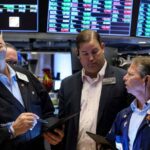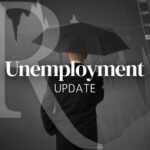By Andrew Moran
The U.S. economy is in a technical recession as the GDP growth rate fell 0.9 percent in the second quarter, according to the Bureau of Economic Analysis (BEA). The market had penciled in a gain of 0.5 percent during the April-to-June span.
With the GDP falling 1.6 percent in the first quarter, this represents two consecutive quarters of negative growth—a common definition of recession.
The decline in GDP reflected declines in private inventory investment, government spending, and residential and non-residential fixed investment. But this was offset by gains in imports, exports, and personal consumption expenditures (PCE).
“Message is clear from the negative US GDP print (-0.9%) and unfavorable miss on jobless claims: The US #economy is slowing at a significant rate,” economist Mohamed El-Erian tweeted shortly after the numbers were published. “Add to that the 8.7% price change in today’s data and the bottom line is clear: Deepening stagflation and flashing red recession risk.”
BEA data also reported that the GDP price index advanced 8.9 percent in the previous quarter, topping the market estimate of 7.9 percent. GDP sales rose 1.1 percent.
Within the much-anticipated GDP report, the BEA found that real personal income fell 0.5 percent, while the personal saving rate dipped 0.4 percent to 5.2 percent. Moreover, the drop in private inventory investment was led by a decline in retail trade, primarily in general merchandise stores and motor vehicle dealers. The decrease in government spending was attributed to a dip in non-defense expenditures, mainly due to the sale of crude oil from the Strategic Petroleum Reserve (SPR).
In its final update before the release of the second-quarter data, the Fed Bank of Atlanta GDPNow model estimate suggested a 1.2 percent contraction in the April-to-June period.
The financial markets added to their losses during the Thursday session. The Dow Jones Industrial Average shed about 200 points, while the S&P 500 dipped nearly 0.7%. The Nasdaq Composite Index tumbled more than 1 percent.
T with the leading benchmark indexes down as much as 0.7 percent. The U.S. Dollar Index (DXY), a gauge of the greenback against a basket of currencies, picked up modest gains to touch 106.7.
U.S. Treasuries were mostly red across the board, with the benchmark 10-year yield down 7 basis points to 2.66 percent.
Commodities extended their rally from overnight trading, with gold and silver prices up 1.4 percent and 4.9 percent, respectively. West Texas Intermediate (WTI) crude oil futures also surged 2.1 percent to $99.32 per barrel on the New York Mercantile Exchange.
Definition of Recession
Most economists generally look for two consecutive quarters of decline in GDP to determine whether an economy has entered a recession. The White House Council of Economic Advisers challenged this notion, citing the official definition, in a recent blog.
Recessions in the United States are officially declared by a committee of economists at the National Bureau of Economic Research (NBER). The NBER defines a recession as “a significant decline in economic activity that is spread across the economy and that lasts more than a few months.”
According to the White House, recessions should be determined and “based on a holistic look at the data,” by taking into account the labor market, consumer and business spending, industrial production, and earnings, as opposed to economic growth data in just two quarters.
Over the last week, the White House has been criticized for downplaying recession risks and disputing the common definition of recession.
“Two negative quarters of GDP growth is not the technical definition of recession,” National Economic Council (NEC) adviser Brian Deese told reporters during a briefing on Tuesday. “The most important question economically is whether working people and middle-class families have more breathing room.”
But in 2008, Deese noted that “economists have a technical definition of recession, which is two consecutive quarters of negative growth.”
Treasury Secretary Janet Yellen had dismissed recession concerns during an interview with NBC’s “Meet the Press,” alluding to “a very strong labor market.”
“This is not an economy that’s in recession,” she said.
In a post-Federal Open Market Committee (FOMC) press conference on Wednesday, Federal Reserve Chair Jerome Powell also asserted that the United States was not in the middle of an economic downturn, pointing to the employment situation.
“I do not think the U.S. is currently in a recession, and the reason is there are too many areas of the economy that are performing too well,” Powell said.
‘Unusual Business Cycle’
According to the Federal Reserve’s Summary of Economic Projections (pdf), the U.S. economy is forecast to expand 1.7 percent this year, 1.7 percent in 2023, and 1.9 percent in 2024.
On Wednesday, the Fed voted unanimously to raise the benchmark fed funds rate by 75 basis points to a target range of 2.25 percent to 2.5 percent.
In recent weeks, the growing base case for many economists and Wall Street firms has been a recession, pointing to a broad array of data supporting this projection. But the timing has varied, ranging from the end of the year to sometime in the next 24 months.
“None of this is to say that recession risks are nothing to worry about. Rather, we expect that recession risk will crest in 2023, as that’s when the economy will feel the brunt of Fed tightening. In particular, rising interest rates are starting to trigger a downturn in the housing markets. We expect housing starts to decline 10% in 2023, which will weigh heavily on broader economic activity,” wrote Preston Caldwell, the head of U.S. Economics for Morningstar, in a note.
For now, the main debate is when it would happen, the severity of a downturn, and how long a recession would last.
Bryce Doty, the senior portfolio manager at Sit Investment Associates, stated in a note on Wednesday that Americans understand when their standard of living is declining.
“Economists have a delusional concept of recession,” he said. “Since April of last year, real wages have turned negative. Workers are going backwards as higher costs outpace wages increases resulting in a net reduction in what people are able to afford.”
Nick Reece, a portfolio manager at Merk Investments, calls today’s environment “an unusual business cycle, following an unusual recession.”
Looking ahead to the third quarter, the Atlanta Fed Bank will publish its first GDPNow estimate Friday.






